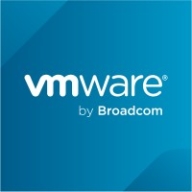

SAP S4HANA on AWS and VMware Cloud Foundation are two significant solutions competing in the enterprise resource space. SAP S4HANA on AWS seems to hold the upper hand due to its excellent cost management and real-time data processing capabilities.
Features: SAP S4HANA on AWS offers an integrated platform with a powerful HANA database that enhances processing speed and reduces redundancy. It supports AI-enabled insights for finance and manufacturing operations and minimizes infrastructure maintenance with AWS hosting. VMware Cloud Foundation excels in lifecycle management with strong virtualization and automation features, providing efficient resource management across environments.
Room for Improvement: SAP S4HANA on AWS could lower hardware costs, improve its interface, and enhance cloud support and training resources. VMware Cloud Foundation needs a sharper cost structure, simplified licensing, and an improved upgrade process alongside better integration with VMware's ecosystem.
Ease of Deployment and Customer Service: SAP S4HANA on AWS offers flexibility across clouds but can be complex for smaller organizations, with technical support being robust yet occasionally slow. VMware Cloud Foundation ensures user-friendly deployment and easy management of mixed environments but requires better response times in customer service and clearer licensing information.
Pricing and ROI: SAP S4HANA on AWS is considered costly, driven by infrastructure and licensing factors, but it delivers significant ROI through process efficiency. VMware Cloud Foundation, also expensive, justifies its cost with potential savings in larger deployments, recommending bundle pricing for maximizing value, while highlighting a need for flexibility improvements.
On a very good implementation, usually, if the scale of the business is large, the implementation can give a payback within six, seven, or eight months of implementation.
Although our investment was higher compared to the previous ERP system, we are able to derive ROI from SAP S4HANA on AWS.
VMware Cloud Foundation allows cost and time savings by quickly deploying infrastructure requests and integrating automatic ticketing and backup services.
In terms of ROI, although VMware Cloud Foundation is expensive, it saves time in most cases, which indirectly saves costs for users.
They have a support model available, with first-level support handling initial issues when I integrate the system.
We received the right support during our implementation and continue to benefit from it.
There are times when support is unclear, and even VMware support personnel may lack familiarity with certain parts, causing difficulties.
Based on my nine years of experience with VMware, I would evaluate their technical support as effective.
Our technical support team is capable of providing support on the operating system side.
AWS has been running probably 96% of Fortune 500 companies across the globe, so scalability is not an issue.
The product is versatile and can manage complexity beyond expectations.
When more hosts are added, performance goes slow.
VMware Cloud Foundation supports scalability and company growth.
VMware Cloud Foundation is quite scalable, receiving a rating of eight and a half to nine out of ten.
As a finance controller, we have seen improvements in finance deliverables, SLAs in payables, and reconciliation timelines.
The stability of VMware Cloud Foundation is very high.
If one component fails to operate in a timely manner, the entire infrastructure can go down because everything is interconnected.
I am currently satisfied with the stability of VMware Cloud Foundation, though having started only two to three months ago, I am still in the monitoring phase.
The interface and interaction with the technical team require intensive training.
SAP introduced flexible workflows, which are even better if I want customized workflows for my documentation within the procurement domain.
Having these integrations as a single source rather than working in silos would be beneficial for customers.
VMware Broadcom needs to include auto resource allocation at the VM levels.
The maintenance cost has increased significantly, especially after Broadcom acquired VMware, with a shift from socket-based licensing to core-based licensing.
Each user needs deep knowledge of every aspect of virtualization.
SAP is not cheap, with many hidden costs encountered during implementation.
The initial setup required a higher investment, but the return on investment has justified the cost.
The cost has become very high, especially after Broadcom's acquisition, altering the licensing model to a more expensive core-based system.
The price is quite higher than some other vendors.
VMware Cloud Foundation is quite expensive when compared to its competitors, but it does save time, which in turn saves money.
The costing and personnel planning integration are among the strongest areas of this solution.
From the finance side, we have enhanced our internal controls and reduced the timeline for closing the month from a year to just two days.
It manages complexity in various industries such as banking, manufacturing, and trading.
The solution now offers auto-deployment of VMs.
All features of VMware Cloud Foundation are valuable to us, as it covers every industry standard protocol and requirement protocol.
VMware Cloud Foundation allows for extensive customization, aligning with our customer requirements.
| Product | Market Share (%) |
|---|---|
| SAP S4HANA on AWS | 3.0% |
| VMware Cloud Foundation | 1.4% |
| Other | 95.6% |


| Company Size | Count |
|---|---|
| Small Business | 19 |
| Midsize Enterprise | 8 |
| Large Enterprise | 15 |
| Company Size | Count |
|---|---|
| Small Business | 7 |
| Midsize Enterprise | 3 |
| Large Enterprise | 27 |
SAP customers of all sizes can fully realize all the benefits of the SAP S/4HANA, on-premise edition on the AWS Cloud. With SAP S/4HANA, on-premise edition on the AWS Cloud you can:
VMware Cloud Foundation makes it easy to deploy and run a hybrid cloud. VMware Cloud Foundation provides integrated cloud infrastructure (compute, storage, networking, and security) and cloud management services to run enterprise applications in both private and public environments.
We monitor all Infrastructure as a Service Clouds (IaaS) reviews to prevent fraudulent reviews and keep review quality high. We do not post reviews by company employees or direct competitors. We validate each review for authenticity via cross-reference with LinkedIn, and personal follow-up with the reviewer when necessary.